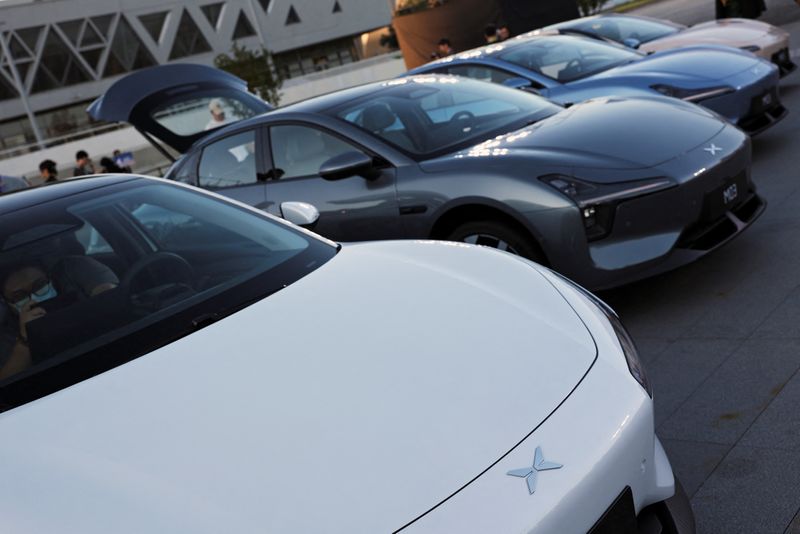SHANGHAI (Reuters) – Xpeng (NYSE:) unveiled its extended-range hybrid technology on Wednesday, as the Chinese electric vehicle maker bets on a move to such products that are more cost-competitive than pure EVs to boost sales and improve profitability.
The ‘Kunpeng Super Electric System’ allows a car to travel more than 1,400 kilometers with an internal combustion engine available to charge the batteries once they run out, founder He Xiaopeng said during a livestream event in the southern Chinese city of Guangzhou.
“I noticed that the infrastructure, such as the electricity grid, in many countries is actually less developed than that in China. We need new types of charging solutions that meet different market conditions worldwide. That’s why we came up with the longer range hybrid,” he said .
However, the automaker did not say when it would launch new models equipped with this technology.
Following the lead of Li Auto (NASDAQ:), which primarily sells extended-range electric vehicles (EREV), more and more Chinese automakers are embracing this technology, which uses fewer batteries that account for a significant portion of the cost of an electric car .
Nio (NYSE:) is also planning an EREV that will only go on sale in overseas markets including the Middle East, North Africa and Europe, Reuters reported earlier this week.
In October, battery giant CATL also launched its first battery product specialized in extended-range hybrids as it looks to meet growing demand from automakers’ customers and consumers.
EREVs are also subject to the European Commission’s additional tariffs on Chinese-made electric vehicles, but they could help automakers lower costs per vehicle to partially counter the impact, said Yale Zhang, managing director at Automotive Foresight.
They can adapt to markets that do not have sufficient infrastructure for mass adoption of electric vehicles, Zhang added. In Europe, for example, 16 EVs must share one charging station, while in China the ratio has fallen to 2.5 to 1, Zhang said.

Xpeng also showed other new technologies, including its self-developed artificial intelligence chip, humanoid robot and flying car.
The company will deliver the latest version of the advanced driver assistance system to its users this month and aims to improve the success rate of lane changing and autonomous parking, the company said.


